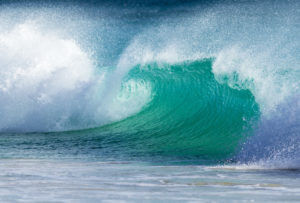Previously we presented an ideal model of motive waves; however, the real market is not exactly perfect. In this educational article, we will develop the principles of impulsive waves.
The nature of impulsive waves
Before we begin to identify impulsive waves, we must consider the following rules that compose it:
- It must have five consecutive segments, or waves, that develop a trend.
- Three of these five waves must move in the same direction; this can be bullish or bearish.
- After the initial wave, a shorter sequence must be developed in the opposite direction of the first movement. This movement should never be greater than the advance of the first wave.
- The third wave must be larger than the second movement.
- After the third impulsive movement, a similar sequence to the second wave should be developed. However, the third segment trend must prevail over the fourth.
- The fifth wave, in most cases, will be more extense than the fourth movement. If the fifth wave is smaller than the fourth wave, this is called a “failure.”
- When comparing the lengths of waves 1, 3, and 5, the third wave does not necessarily have to be the longest. However, it should not be the shortest.
If one of these rules is not followed, then the movement is not an impulse, the structure corresponds to a corrective sequence.
The alternation principle
Elliott defines alternation as a law of nature, as the day and night alternates, the movements of a market also alternate. The alternation principle establishes that when two waves of the same degree are compared, they are different from each other.
We observe the alternation in:
- The distance that price travels.
- The duration of each wave.
- The retracement of the depth of each impulse (waves 2 and 4).
- The complexity of each wave, that is, the number of internal waves that compose it.
The following daily chart corresponds to the EURAUD cross. In the chart, we observe the alternation in price and time. The first bullish movement began on August 21, 1997, at 1.42014, this wave was developed on 118 days and increased 2,919 pips or 20.55%. Wave 3 surged on 131 days and reported an increase of 19.83% or 3,121.6 pips. Finally, the fifth wave grew in 81 days, advancing 3,059.5 pips, or 17.44%, reaching the high at 2,05983 on October 06, 1998.
In the following EURAUD daily chart, we recognize the alternation in the retracement. From wave 2, we observed that the retrace of wave 1, was developed for 44 days, and the cross plunged 8.05% or 1,377.9 pips. Finally, wave 4 fell 1,334.1 pips (7.07%) of wave 3 in 36 days.






